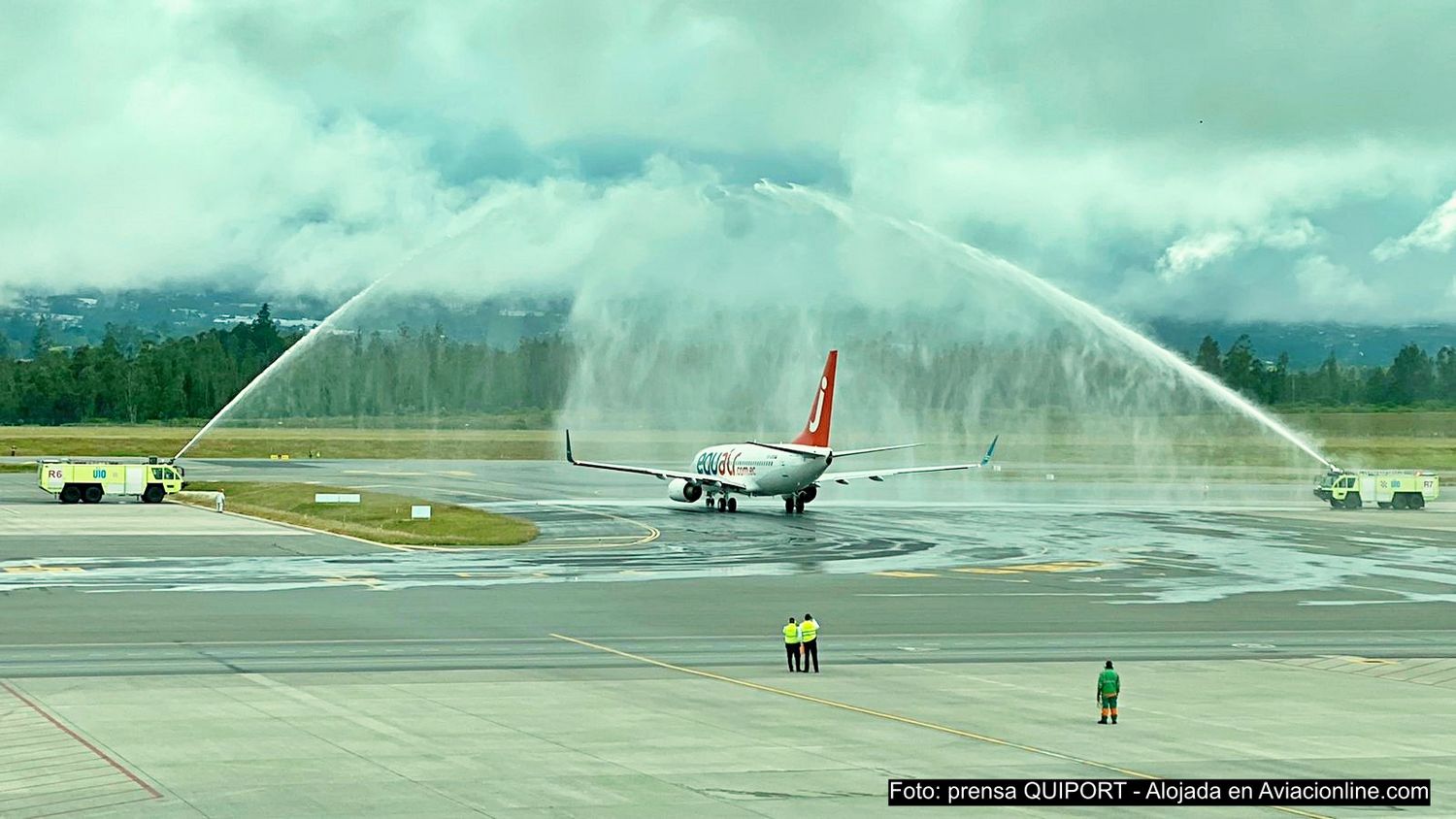This Monday morning at the Mariscal Sucre International Airport in Quito, it took place the opening ceremony of Equair’s scheduled flights, the newest airline in Ecuador and Latin America.
The event was attended by Gabriela Sommerfeld, CEO of Equair, together with other executives of the company; Marcelo Cabrera, Minister of Transportation and Public Works of Ecuador; Alfredo Espinosa, Monsignor of Quito; and Allan Padilla, Director of Operations of Quiport, concessionaire of the Quito airport, among others.
«Today is a great day. We are bringing more jobs, more investment, more connectivity, which translates into greater competitiveness, in powerful productive development, we want to restore Ecuador, return that air bridge that we need so much. We want to generate abundance for Ecuador, and that is what air transportation does,» said Sommerfeld.

The CEO also thanked Boeing for the cooperative work they provided. «This is a reality because of the alliance with Boeing. Their support has been extremely important, the knowledge they have transmitted to 100% of our personnel».
For his part, Alan Padilla said that «at Corporación Quiport we are extremely pleased to welcome Equair as part of the group of airlines operating at Quito airport.»
«We highlight the importance of the joint work developed with the Ministry of Transport and Public Works, the Ministry of Tourism, the Directorate General of Civil Aviation, and the Municipality of Quito, all key players in developing connectivity. We wish Equair the best of luck at the start of its operation and hope that it can expand its destinations and become a stimulating factor to expand the market and provide a better connectivity offer to domestic travelers,» he added.

Equair will initially operate six daily flights Monday through Friday between Quito and Guayaquil, the two most important cities in Ecuador, with departures from the national capital at 6:20, 7:25, 9:30, 15:01, 17:30, and 19:00. Flights depart from Guayaquil at 7:50, 14:55, 17:30, 19:00 and 20:30. On weekends, as can be seen in the reservation system, two daily flights will operate in each direction.
Flights on this air bridge, one of the busiest in the region, will be complemented from Guayaquil with five services per week (Monday, Wednesday, Thursday, Friday, and Saturday) to Baltra (GPS) and two weekly (Tuesdays and Sundays) to San Cristobal (SCY), both in the Galapagos Islands archipelago. Immediate connections to and from Quito are also offered.
Equair had planned to start scheduled flights on December 22, but the COVID outbreak that shook the country also had an impact on its employees and those of control agencies, so it only obtained its Air Operator’s Certificate last week.
Its fleet consists of two 142-passenger Boeing 737-700s (HC-CXB and HC-CXC), both previously operated by KLM. This year they expect to receive two more aircraft to increase their offer of domestic destinations.
The void left by TAME caused a war in the domestic market.
EquAir’s entry into the Ecuadorian market follows the departure of Tame, which left a gap in supply that was hidden by the pandemic but is now being felt as activity recovers.

The state-owned company Tame, which covered a large part of the national territory, was dissolved last year due to a large debt and the impossibility of reactivating it after several years of attempts.
Three airlines operate in Ecuador: LATAM and Avianca which have added destinations to Coca (OCC), Cuenca (CUE), and Loja (LOH) to their network, and Aeroregional, a small company with connections to Loja (LOH), Guayaquil (GYE), Coca (OCC) and Galapagos (GPS) from Quito (UIO).
Ecuatoriana Airlines was also launched last April, which also shares the objective of filling TAME’s void by operating three DHC 8-400s that were agreed with ACC Aviation at the Dubai AirShow 2021, an ideal aircraft for the geography of the South American country.
There is no doubt that the Ecuadorian domestic market will start in 2022 with great expectations. It should be recalled that the Government of Ecuador continues to negotiate «open skies» in key countries, which would drive an increase in international frequencies and thus domestic tourism.


Comentarios
Para comentar, debés estar registrado
Por favor, iniciá sesión